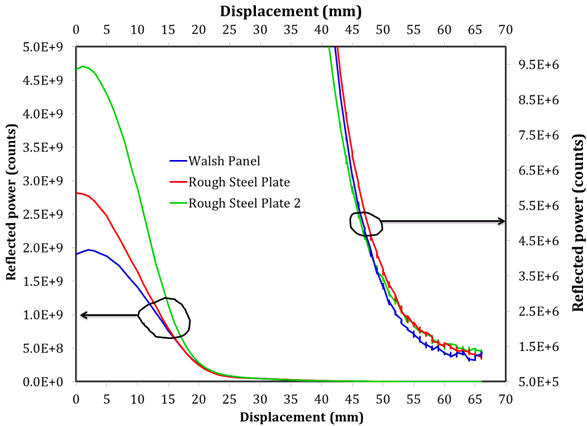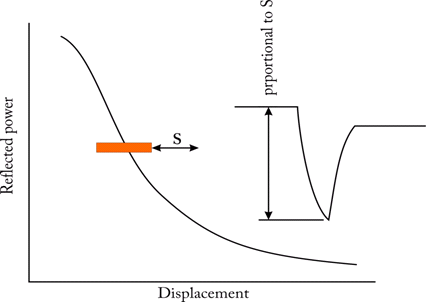
The incident energy in a ballistic event is the sum of trauma generating energy and dissipated energy:
Terahertz dynamic reflectometer (TDR) for ballistic analysis

The incident energy in a ballistic event is the sum of trauma generating energy
and dissipated energy:
![]()

Experimental setup of TDR. The terahertz source and the detection unit remain stationary while the target undergoes sudden deformation by absorbing ballistic impact. The beam from the source is incident at an angle (35°) on the target and reflected back into the detection system.

Calibration of deformation (displacement) vs. power. While the curves on the left Y-axis tend to go to zero at displacement 30 mm and above, however, when the Y-axis is expanded (right Y-axis), the reflected power is still a rapidly varying function of displacement. This indicates that that the calibration is valid for displacements up to at least 60 mm. The concept is further illustrated below.

When a target is placed on the displacement curve shown, the measured power remains steady as long as the target remains fixed. A sudden displacement (deformation) of the target causes the power drop proportional to the displacement and then becomes steady at the new position. Therefore, the power measured in real-time generates a kinetics curve (inset) from which corresponding displacement can be quantified.
Order
Click here for ordering information
Applied Research & Photonics, Inc.
470 Friendship Road, Suite 10
Harrisburg, PA 17111
e-mail: info@arphotonics.net
Phone: 717-220-1003
Fax: 717-566-1177
![]()
© 2002-2012
Applied Research & Photonics, Inc.
Disclaimer: Any and all information including any specifications on this web may change at anytime at ARP's discretion.